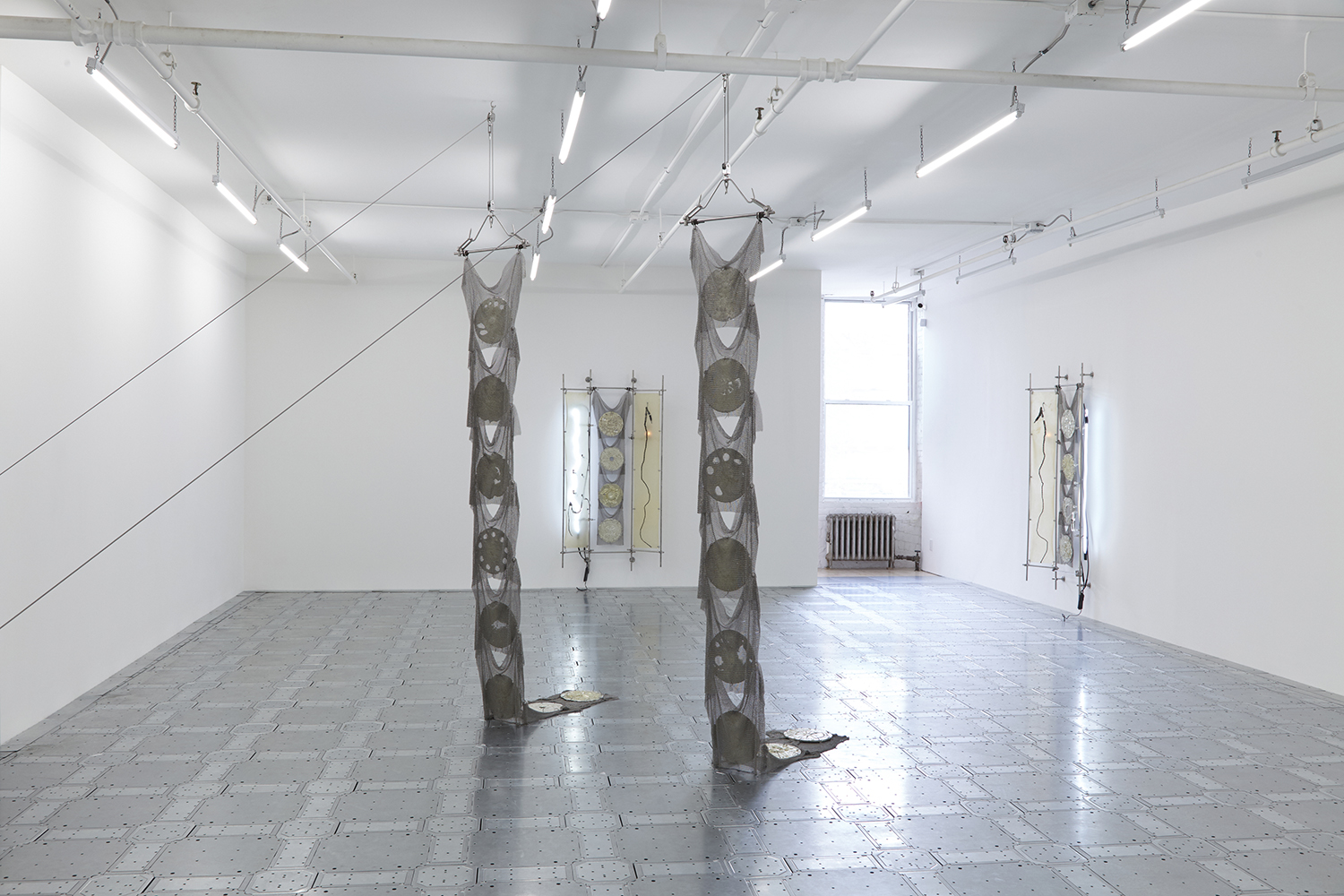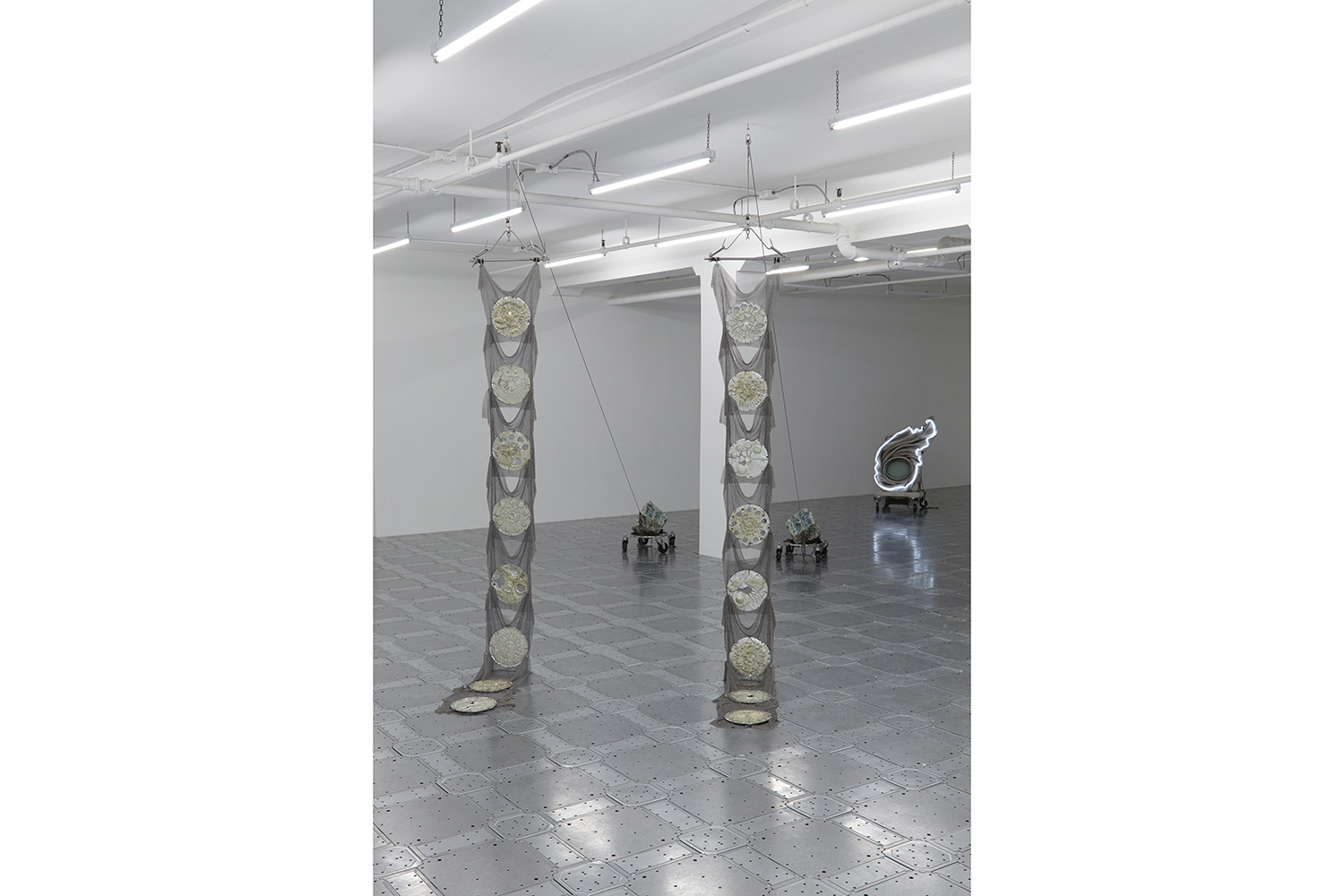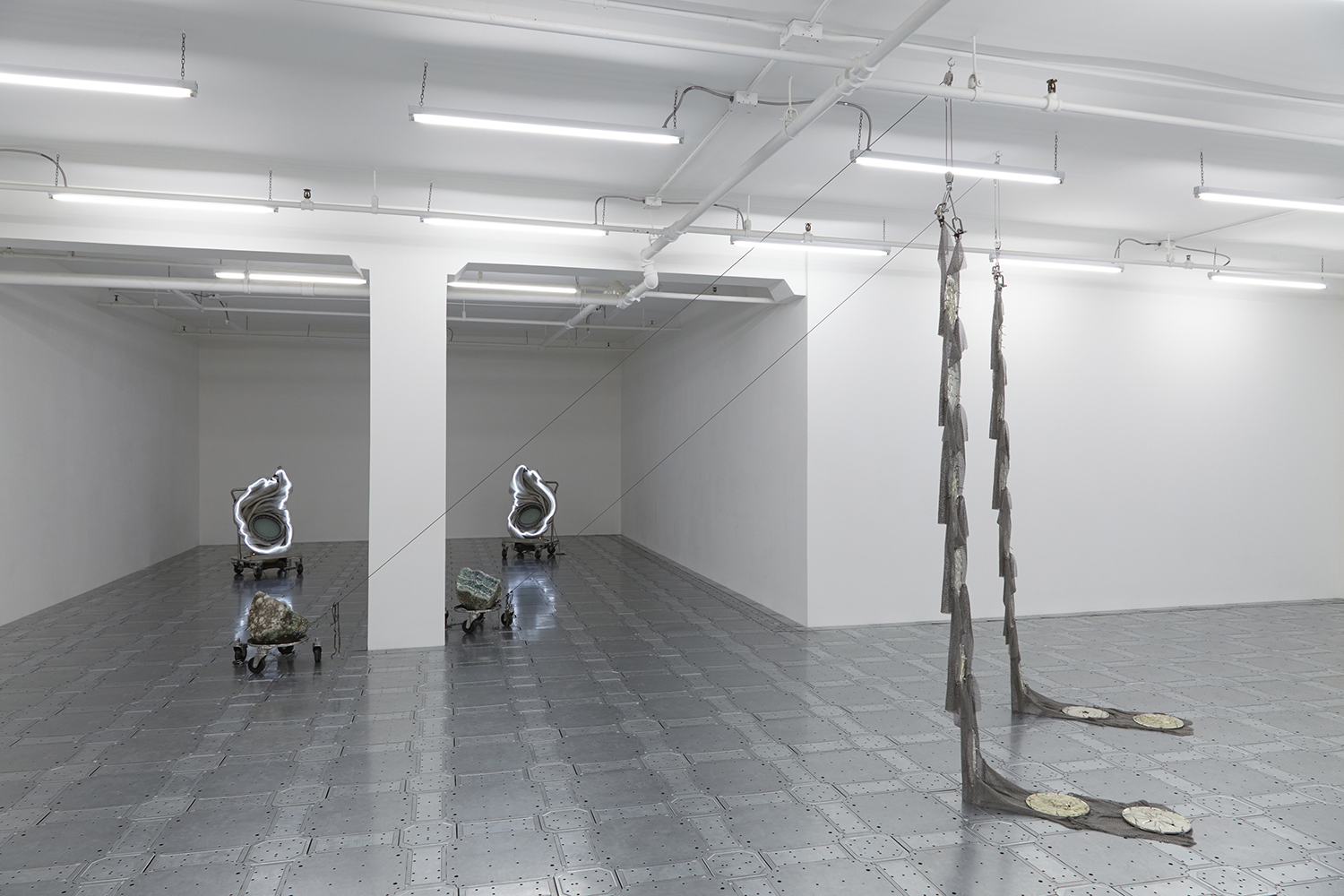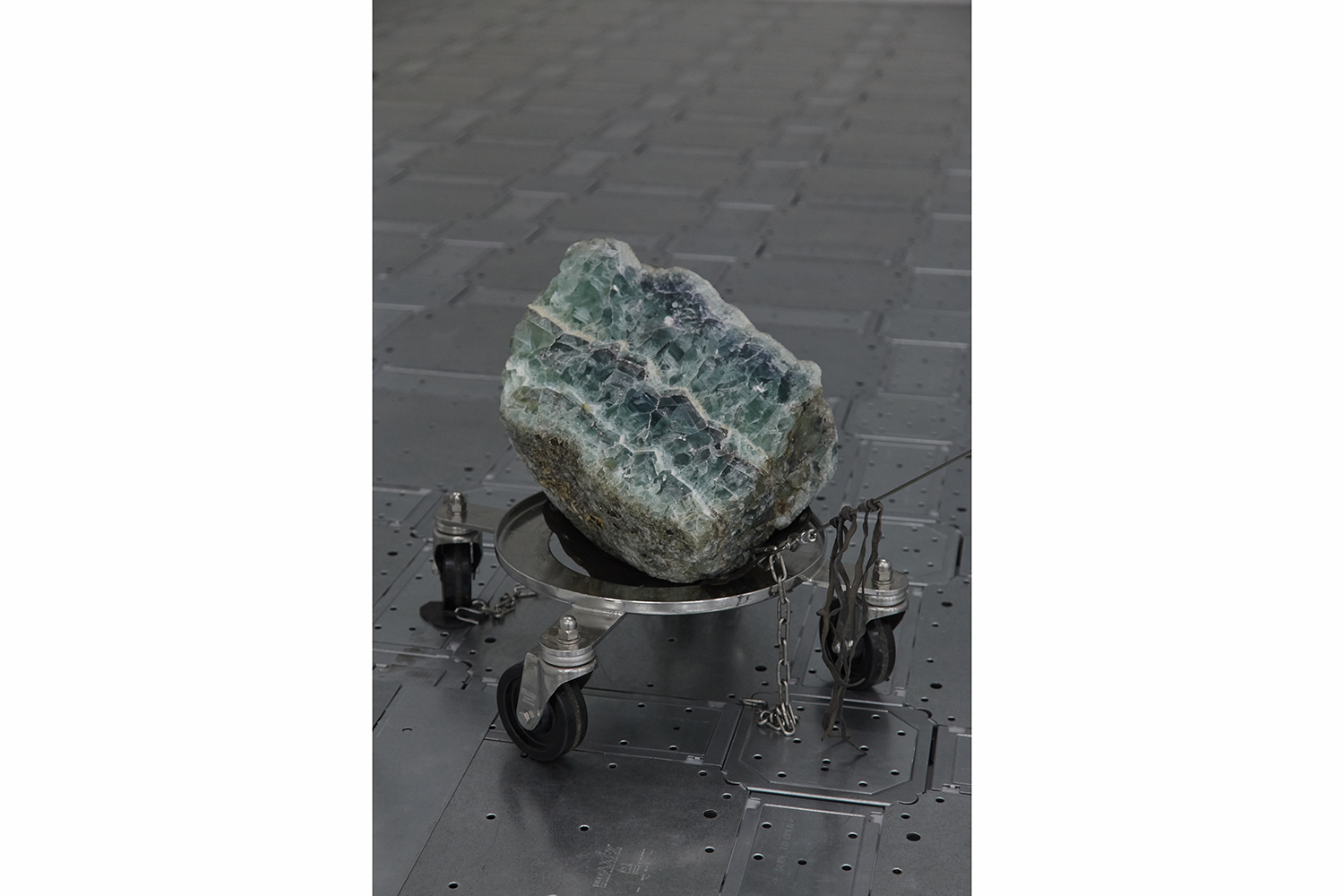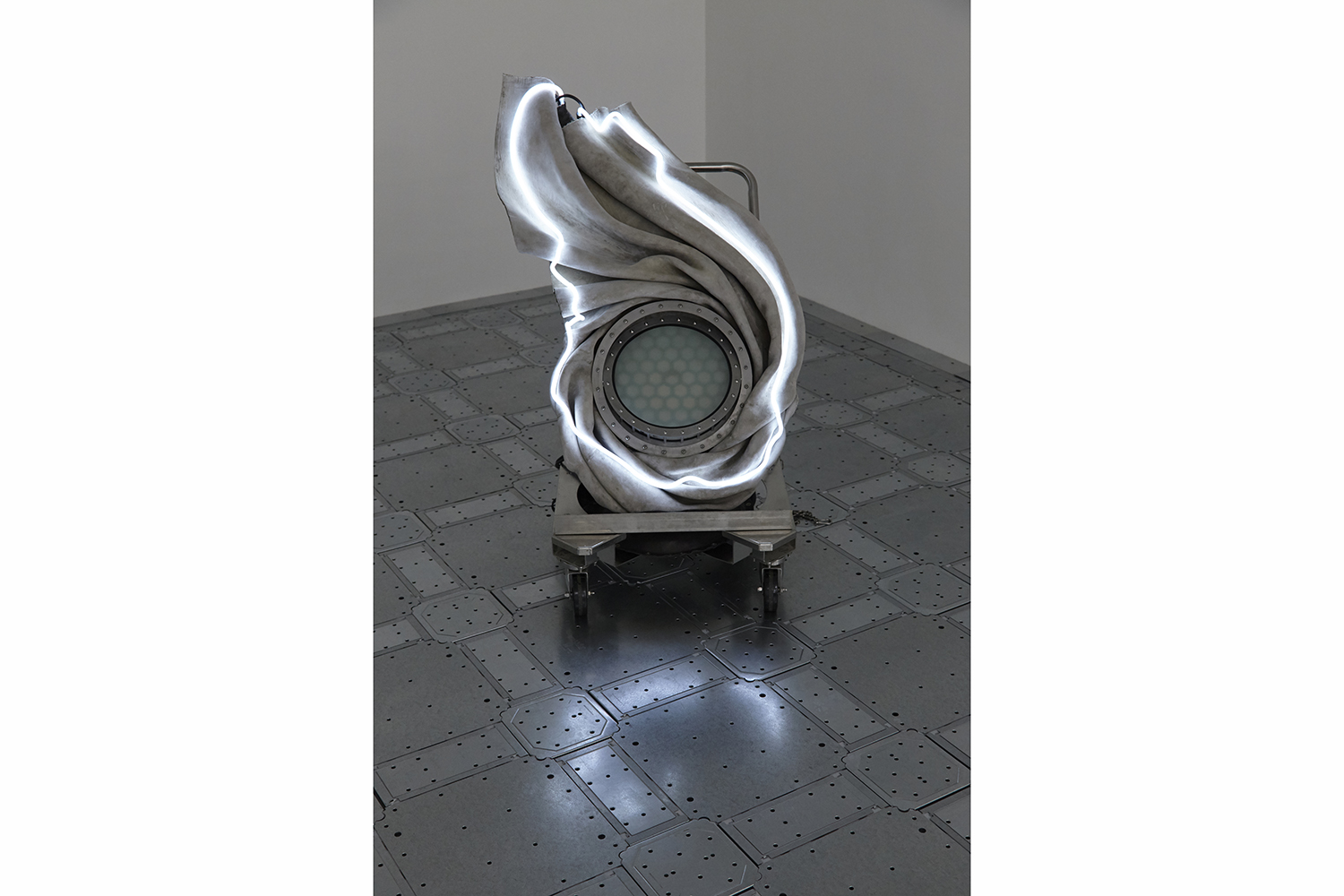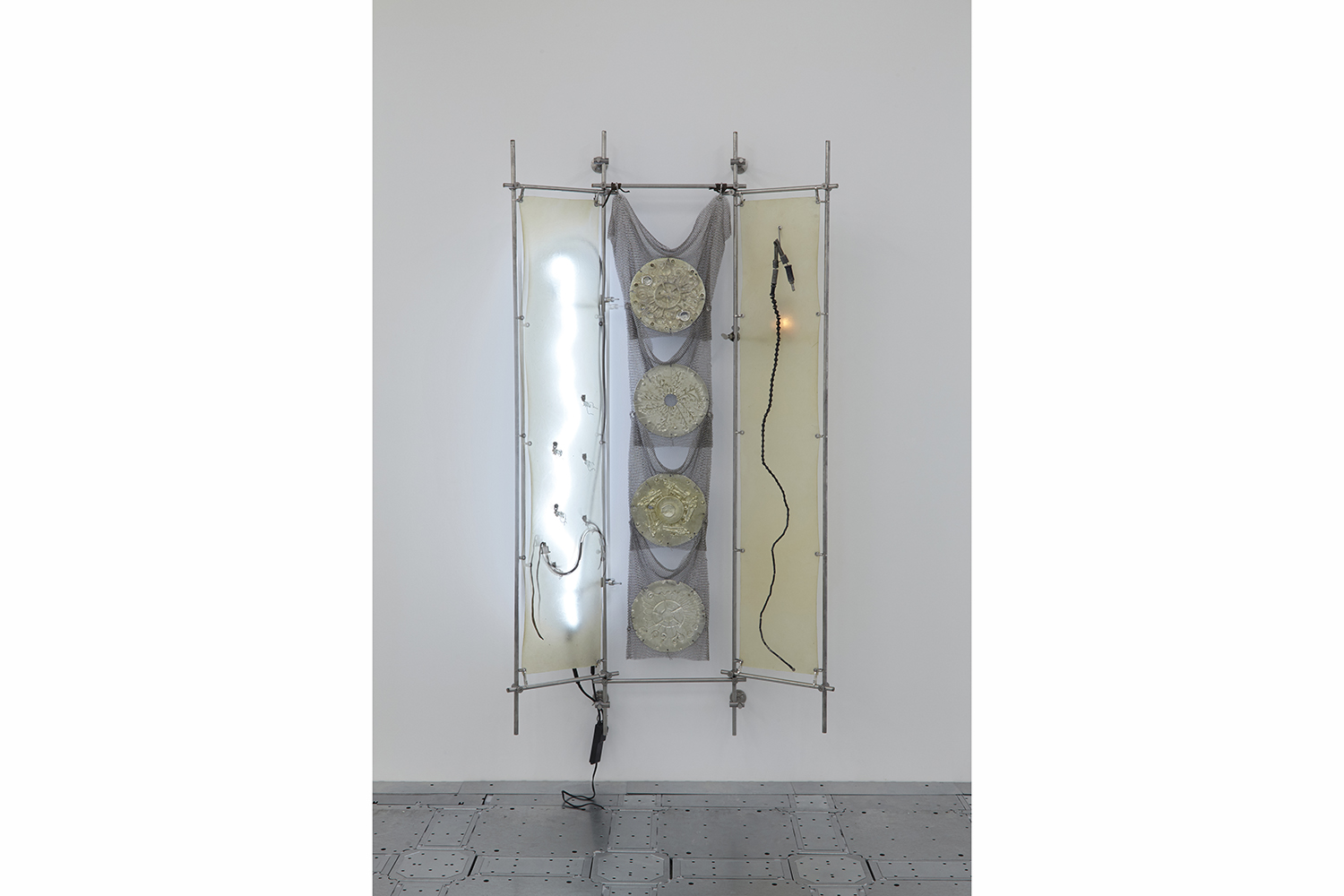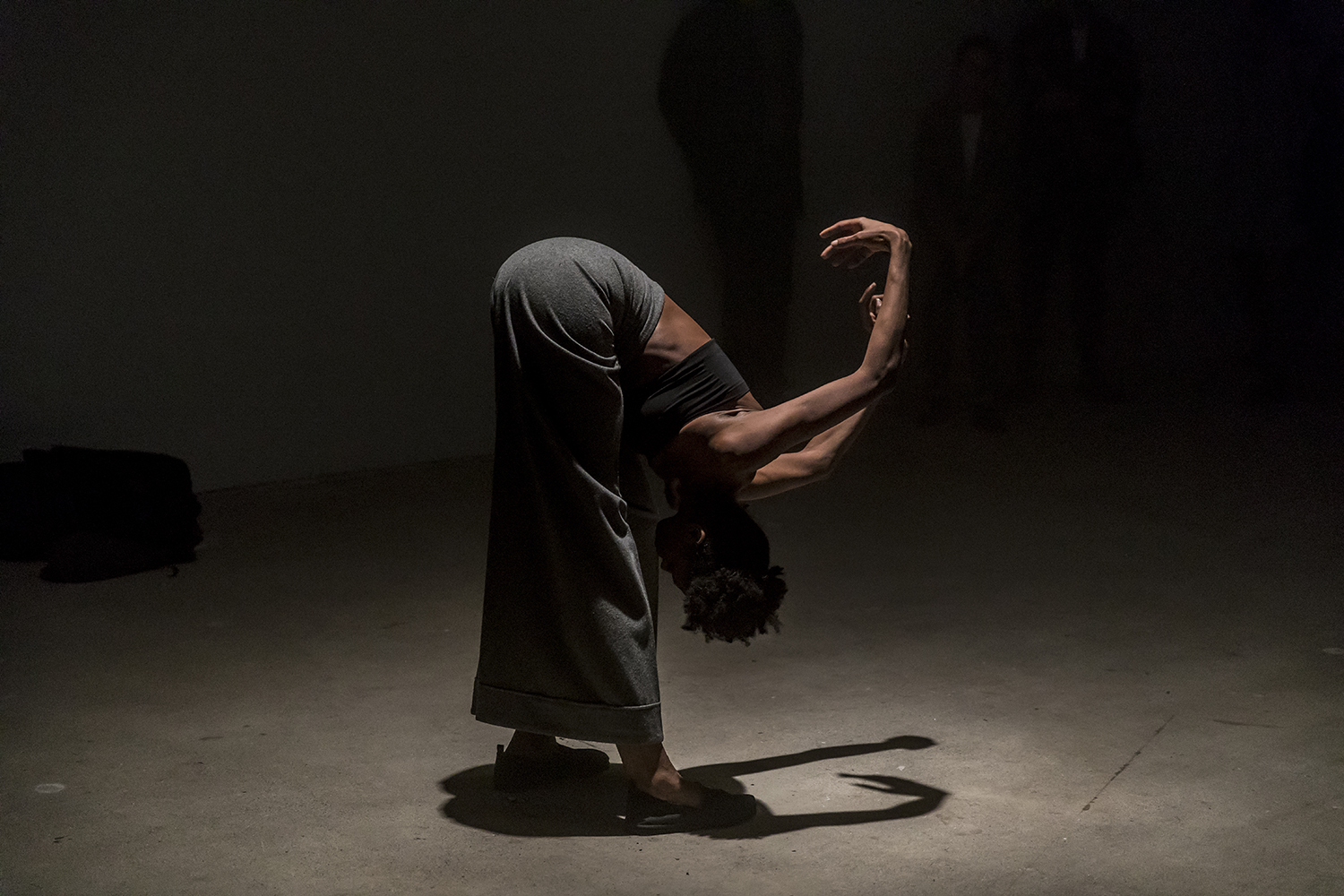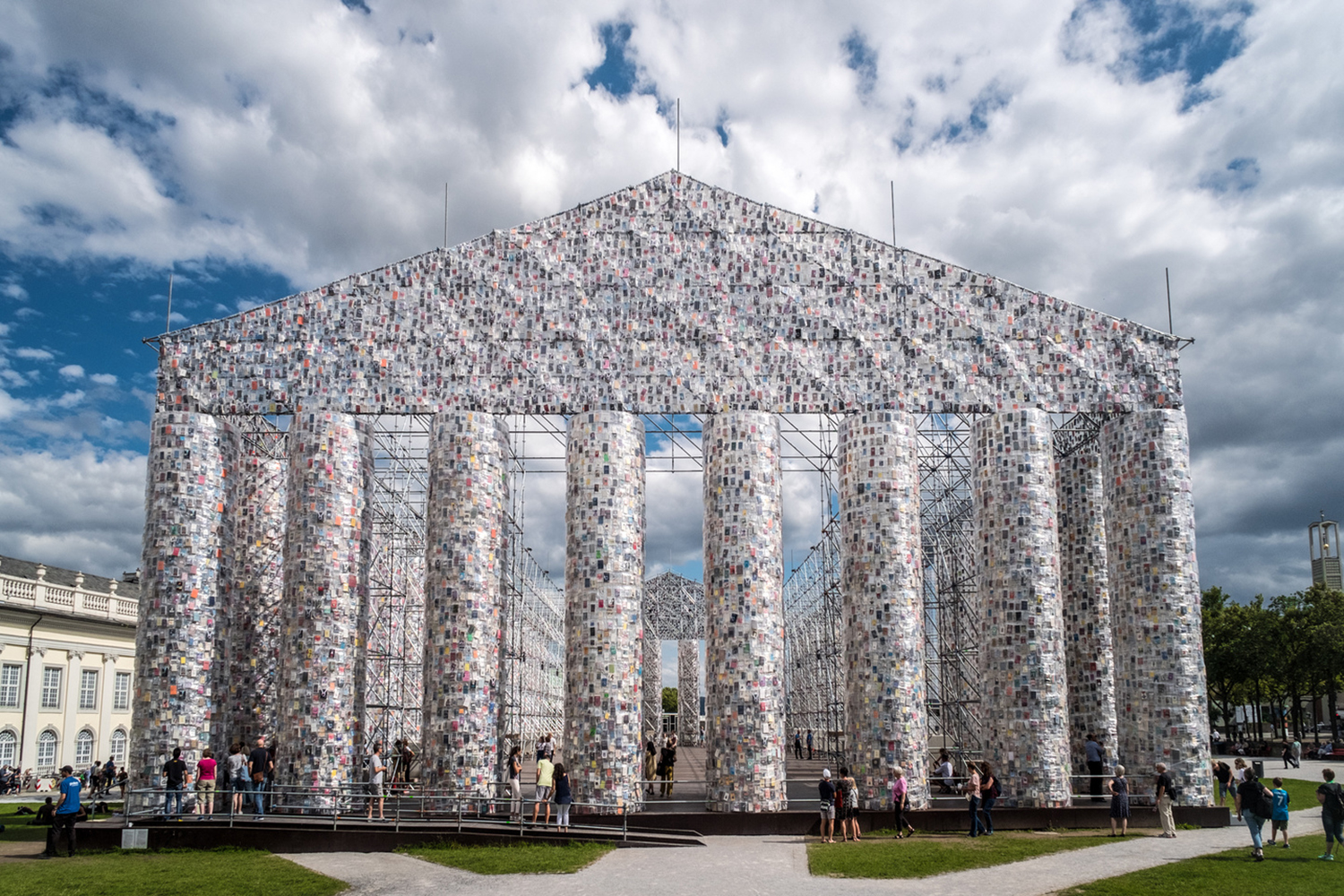In Elaine Cameron-Weir’s “strings that show the wind,” three sets of paired sculptures stand, as if halted mid-procession, atop an artificial ground of perforated steel panels. Though not a work in itself, the gridded metal base is composed of plates used for rerouting the cables of machines, supplanting the floor of JTT. While gesturing to Minimalism (like Carl Andre’s floor pieces), Cameron-Weir’s silvery stage inaugurates the exhibition’s central evocation of the metallic as both elemental and technological, through works that blur the distinction between nature and culture, myth and machines.
The three sculptural pairs elaborate encounters of implied bodies and metal parts, framed by the artist’s lyrical and lengthy (almost distractingly so) titles. For example, one sculpture is called at the end of the line an echo sliding downtown the mercurial reflective pool of a familiar voice and me a person it never made real in the mirrors of my own halls (2019). In this work, concrete-coated cloth swirls into a wing-like shape around a telescope lens. Its contour is framed by the squiggling white line of a neon tube, while a liquid candle barely illuminates the lens from behind. With its inversed pair, the two works together conjure a futuristic Nike of Samothrace, whose draped wings synthesize old and outmoded technologies (like candles and neon) into an icon of both survival and fragility.
“Fossil record symmetries to the physical world,” a phrase from the title of the central sculptural duo, aptly characterizes the form and temporality of this and the third pair. In both sets of sculptures, the artist utilizes metal chainmail fabric and metal disks that recall medieval armor. The disks are in fact molds for casting metal jewelry, yet their impressed forms resemble fossilized creatures while their circular shape recalls obsolescent records and film reels. The artist compellingly renews these timeworn forms into animistic assemblages that hold in tension their structural vulnerability and an aura of protection.
Cameron-Weir’s new sculptures in “strings that show the wind” mine shards of past technologies as an act of armoring against the total metallization of the future.



